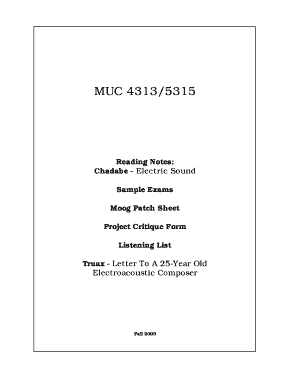
Electric Sound Chadabe Pdf
Find more information about: OCLC Number: 681476707 Reproduction Notes: Electronic reproduction. [S.l.]: HathiTrust Digital Library, 2010. MiAaHDL Description: 1 online resource (iv, 370 pages): illustrations Details: Master and use copy. Digital master created according to Benchmark for Faithful Digital Reproductions of Monographs and Serials, Version 1. Digital Library Federation, December 2002. Contents: The pioneers in the first half of the twentieth century -- The Early Instruments -- Tape music and related technology, in the studio and in performance -- The Great Opening Up of Music to All Sounds -- Expansion of the Tape Music Idea -- Out of the Studios -- Digital technology and synthesizer concepts come together -- Computer Music -- Synthesizers -- The MIDI World -- Where are we in the development of performance devices and sound generators?
-- Inputs and Controls -- Making Sound -- Ideas emerge for an interactive instrument -- Automata -- Interaction -- Summaries and speculations -- Where Are We Going? Responsibility: Joel Chadabe.
Joel Chadabe, Electric Sound: The Past and Promise of. Electronic Music (New Jersey: Prentice-Hall, 1997), 370pp. ISBN 0 13 303231 0; and Paul Theberge,.
Wurtzler / 2008-12-01 Technological Change and the Rise of Corporate Mass Media Author: Steve J. Wurtzler Publisher: Columbia University Press ISBN: 778 Category: Computers Page: 393 View: 7370 The 1920s and 1930s marked some of the most important developments in the history of the American mass media: the film industry's conversion to synchronous sound, the rise of radio networks and advertising-supported broadcasting, the establishment of a federal regulatory framework, and the birth of a new acoustic commodity in which consumers accessed stories, songs, and other products through multiple media formats. The innovations of this period not only restructured and consolidated corporate mass media interests while shifting the conventions of media consumption. They renegotiated the social functions assigned to mass media forms. In this impeccably researched history, Steve J. Wurtzler grasps the full story of sounds media, proving that the ultimate form technology takes is never predetermined but shaped by conflicting visions of technological possibility in economic, cultural, and political realms.

Charles O'Brien / 2019-02-08 Transatlantic Trends Author: Charles O'Brien Publisher: Indiana University Press ISBN: Category: Performing Arts Page: 240 View: 1236 How did the introduction of recorded music affect the production, viewing experience, and global export of movies? Programming software java. In Movies, Songs, and Electric Sound, Charles O’Brien examines American and European musical films created circa 1930, when the world’s sound-equipped theaters screened movies featuring recorded songs and filmmakers in the United States and Europe struggled to meet the artistic and technical challenges of sound production and distribution.
The presence of singers in films exerted special pressures on film technique, lending a distinct look and sound to the films’ musical sequences. Rather than advancing a film’s plot, songs in these films were staged, filmed, and cut to facilitate the singer’s engagement with her or his public. Through an examination of the export market for sound films in the early 1930s, when German and American companies used musical films as a vehicle for competing to control the world film trade, this book delineates a new transnational context for understanding the Hollywood musical.
Duse vise hrvat^kili slih stoijeca; i. Razvija se sve vise djclovanje s a b o r a. Blavonskili sabora, kojima bi kralj. No zato su se sabori cesce. Saborski su se. Kad smo bili mali, onda smo se medju sobom vrijedjali sa 'Zidove!' Bas smo mi znali koje znacenje to ima. Otprilike isto kao sto su se 90-tih klinci vrijedjali sa 'Srbine!' Protokoli kili.